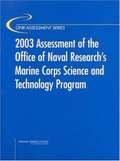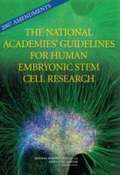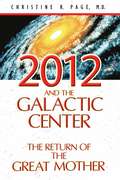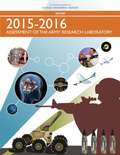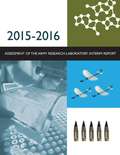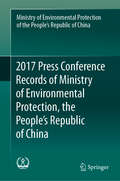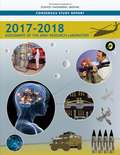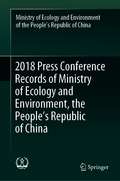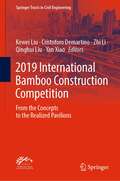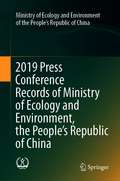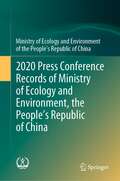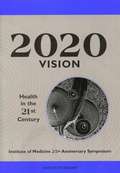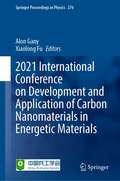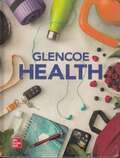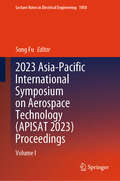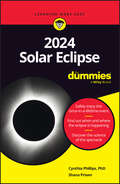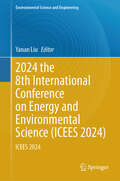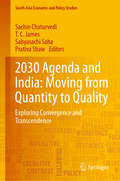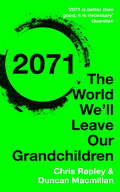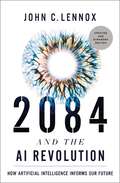- Table View
- List View
2003 Assessment of the Office of Naval Research's Marine Corps Science and Technology Program
by Committee for the Review of ONR's Marine Corps Science Technology ProgramThe Office of Naval Research (ONR) funds research across a broad range of scientific and engineering disciplines in support of the Navy and Marine Corps. To ensure that its investments are serving those ends and are of high quality, ONR requires each of its departments to undergo annual review. Since 1999, the Naval Expeditionary Warfare Department of ONR has requested that the NRC conduct these reviews. This report presents the results of the second review of the Marine Corps Science and Technology program. The first review was conducted in 2000. The 2003 assessment examines the overall Marine Corps S&T program, the littoral combat future naval capability, the core thrusts of the program, and basic research activities.
2007 Amendments The National Academies' Guidelines For Human Embryonic Stem Cell Research
by National Research Council Institute of Medicine of the National AcademiesIn 2005, the National Academies released the report Guidelines for Human Embryonic Stem Cell Research, which offered a common set of ethical standards for a field that, due to the absence of comprehensive federal funding, was lacking national standards for research. In order to keep the Guidelines up to date, given the rapid pace of scientific developments in the field of stem cell research, the Human Embryonic Stem Cell Research Advisory Committee was established in 2006 with support from The Ellison Medical Foundation, The Greenwall Foundation, and the Howard Hughes Medical Institute. This letter report is the committee's first set of amendments to the Guidelines and clarifies earlier recommendations and conclusions, including the criteria for determining which stem cell lines it is acceptable to use. Future deliberations of the committee will address items for which additional information gathering and more extensive debate and discussion will be necessary.
2012 Treasurer's Report
by National Academy of Sciences TreasurerThe income that supports the activities of the Academy comes from two major sources: program revenue received from sponsors to pay for the myriad studies and other activities undertaken each year by the National Research Council (NRC), and a much smaller sum that we obtain from our own endowment under the endowment spending policies adopted by the Council. Regarding the first of these, the 2012 results are not as strong as the 2011 results. Our total program revenue for 2012 ($298 million) experienced a decline of approximately 8% below 2011 revenue. This decline was anticipated based on the ongoing federal budget constraints and we anticipate for 2013 a continuation of this moderate downward trend.<P><P> To partially compensate for the downward trend in the NRC program level, the federal government announced toward the end of 2012, two settlements concerning the 2010 Deepwater Horizon disaster, one with BP Exploration and Production, Inc. and one with Transocean Deepwater, Inc. As part of these legal settlements, the NAS has been asked to establish a new $500 million, 30-year program on human health and environmental protection in the Gulf of Mexico. The NAS program will be for studies conducted based on scientific merit and integrity with emphasis on freedom of inquiry and independent, nonpartisan advice and recommendations. Among its activities, the program will fund projects in the public interest and not otherwise supported by private industry or government agencies. Building on existing Academy work and remaining mindful of the tragic loss of life and other human and environmental consequences of the Deepwater Horizon disaster, the NAS is starting a careful plan to guide the work of this long term program.<P> With respect to the second source of revenue, it has for many years been the formal policy of the Council to limit annual endowment spending to 5% of the average value of endowment for the twelve quarters ending in June of the previous year. When the endowment declined significantly in 2008, the Council made the prudent decision to hold spending to only 4% and to avoid spending whenever possible from endowments with value below the original gift amount, starting in 2009. This 4% draw produced $14.3 million of funding in 2009. These practices will continue for endowment spending in 2013. The return on the endowment in 2012 was positive at approximately 10.2% and roughly in line with the major stock indices.
2012 and the Galactic Center: The Return of the Great Mother
by Christine R. PageA guide to the expansion of consciousness possible during the Galactic Alignment of 2012• Reveals the new era that will be ushered in as the current perception of time collapses and spiritual perception expands • Explains the psycho-spiritual preparations necessary to transition into this new era• Shows how the alignment of the sun with the Galactic Center will allow humans to experience awareness normally reserved for shamans, pharaohs, and sagesThis is an extraordinary time in the planet’s history. In 2012, for the first time in almost 26,000 years, our sun will be most closely aligned to the Galactic Center. This Galactic Alignment, which began with the Harmonic Convergence in 1987 and will conclude in 2023, presents a thirty-six-year window of opportunity for humanity to participate in the creation of a new era of expanded consciousness. Christine Page explains that, as the source of all creation, our galaxy is the Great Mother and its center, her heart. Auspiciously aligning Earth with the heart of the Great Mother, the Galactic Alignment heralds a rebirth of the divine feminine qualities of the Triple Goddess--intuition, emotional creativity, and renewal. Drawing on alchemy and mythology, Page details how to connect with and use the sacred spiritual tools unlocked during the alignment to merge with the Great Mother, a spiritual transformation that allows us to expand our awareness and experience ourselves as eternal beings.
2013-2014 Assessment of the Army Research Laboratory: Interim Report
by Army Research Laboratory Technical Assessment BoardThe National Research Council's Army Research Laboratory Technical Assessment Board provides biennial assessments of the scientific and technical quality of the research, development, and analysis programs at the Army Research Laboratory, focusing on ballistics sciences, human sciences, information sciences, materials sciences, and mechanical sciences. This interim report summarizes the findings of the Board for the first year of this biennial assessment. During the first year the Board examined the following elements: within ballistic sciences, terminal ballistics; within human sciences, translational neuroscience and soldier simulation and training technology; within information sciences, autonomous systems; and within materials sciences, energy materials and devices, photonic materials and devices, and biomaterials. The review of autonomous systems included examination of the mechanical sciences competency area for autonomous systems. A second, final report will subsume the findings of this interim report and add the findings from the second year of the review, during which the Board will examine additional elements.
2015-2016 Assessment of the Army Research Laboratory
by Engineering Medicine National Academies of SciencesThe National Academies of Sciences, Engineering, and Medicine’s Army Research Laboratory Technical Assessment Board (ARLTAB) provides biennial assessments of the scientific and technical quality of the research, development, and analysis programs at the Army Research Laboratory (ARL), focusing on ballistics sciences, human sciences, information sciences, materials sciences, and mechanical sciences. This biennial report summarizes the findings of the ARLTAB from the reviews conducted by the panels in 2015 and 2016 and subsumes the 2015-2016 interim report.
2015-2016 Assessment of the Army Research Laboratory: Interim Report
by Engineering Medicine National Academies of SciencesThe National Academies of Sciences, Engineering, and Medicine's Army Research Laboratory Technical Assessment Board (ARLTAB) provides biennial assessments of the scientific and technical quality of the research, development, and analysis programs at the Army Research Laboratory (ARL), focusing on ballistics sciences, human sciences, information sciences, materials sciences, and mechanical sciences. This interim report summarizes the findings of the Board for the first year of this biennial assessment; the current report addresses approximately half the portfolio for each campaign; the remainder will be assessed in 2016. During the first year the Board examined the following elements within the ARL's science and technology campaigns: biological and bioinspired materials, energy and power materials, and engineered photonics materials; battlefield injury mechanisms, directed energy, and armor and adaptive protection; sensing and effecting, and system intelligence and intelligent systems; advanced computing architectures, computing sciences, data-intensive sciences, and predictive simulation sciences; human-machine interaction, intelligence and control, and perception; humans in multiagent systems, real-world behavior, and toward human variability; and mission capability of systems. A second, final report will subsume the findings of this interim report and add the findings from the second year of the review.
2017 Press Conference Records of Ministry of Environmental Protection, the People's Republic of China
by Min. of Environmental Protection of RPCThis book introduces readers to the press release work carried out by China’s Ministry of Environmental Protection in 2017. The routine press release work in 2017 was first launched by the Ministry of Environmental Protection (MEP). In 2017, 12 directors of the MEP and three directors of the Environmental Protection Department of the Beijing-Tianjin-Hebei Tribune came together to answer citizens’ questions on key social issues such as Environmental Quality Monitoring, Prevention of Air Pollution, Ecosystem Protection, Water Pollution Prevention, Environmental Supervision, Legal Enforcement etc. This book will provide readers with an overview of China’s environmental protection policy initiatives, help raise public awareness of the environment, and lay the foundation for all citizens to participate in environmental governance.
2017-2018 Assessment of the Army Research Laboratory: Interim Report
by Engineering Medicine National Academies of SciencesThe Army Research Laboratory (ARL) is the corporate laboratory for the U.S. army, which bridges scientific and military communities. The ARL is critical in maintaining the United States’ dominant military power through its advanced research and analysis capabilities. The National Academies of Sciences, Engineering, and Medicine's Army Research Laboratory Technical Assessment Board (ARLTAB) conducts biennial assessments of the scientific and technical quality of the facilities. These assessments are necessary to ensure that the ARL’s resources and quality of programs are maximized. 2017-2018 Assessment of the Army Research Laboratory includes findings and recommendations regarding the quality of the ARL’s research, development, and analysis programs. The report of the assessment is subdivided by the ARL’s Science and Technology campaigns, including Materials Research, Sciences for Lethality and Protection, Information Sciences, Computational Sciences, Sciences for Maneuver, Human Sciences, and Analysis and Assessment. This biennial report summarizes the findings for the 2017-2018 period.
2018 Press Conference Records of Ministry of Ecology and Environment, the People’s Republic of China
by Rong WangThis book introduces readers to the press release work carried out by Ministry of Ecology and Environment of the People’s Republic of China in 2018. It is divided into 3 parts, and each part is arranged in chronological order. The first part contains the records of Li Ganjie, Minister of the Ministry of Ecology and Environment, who attended the press conference of the two conferences and the “Ministerial Channel”. The second part contains the record of Special Representative of China's Climate Change Affairs, Xie Zhenhua, who attended the “China's Policies and Actions on Climate Change 2018 Annual Report” press conference, and Zhao Yingmin, Deputy Minister of the Ministry of Ecology and Environment, who attended the “Three-year Action Plan to Win the Blue Sky Defense War” policy briefing. The third part contains the records of 12 regular press conferences of the Ministry of Ecology and Environment throughout the year.
2019 International Bamboo Construction Competition: From the Concepts to the Realized Pavilions (Springer Tracts in Civil Engineering)
by Zhi Li Kewei Liu Cristoforo Demartino Qinghui Liu Yan XiaoThis volume builds upon the 2019 International Bamboo Construction Competition (IBCC 2019) from the Concepts to the Realized Pavilions. Several designed projects are described, and particular attention is devoted to the realized prototypes. It also presents the Bamboo Eye, an important example of architecture realized by INBAR for the 2019 Beijing Horticultural Expo. As such, the volume provides an overview of the use of bamboo poles and engineered bamboo products for temporary and normal constructions, and represents a compact review of the applications of bamboo poles and/or engineered bamboo products in the construction industry. This book will be of interest for researchers, architects and structural engineers in field of bamboo constructions.
2019 Press Conference Records of Ministry of Ecology and Environment, the People’s Republic of China
by Rong WangThis book introduces the press release work carried out by Ministry of Ecology and Environment of the People’s Republic of China in 2019. It is divided into four parts, each arranged chronologically. The first part contains the records of Li Ganjie, Minister of the Ministry of Ecology and Environment, who attended the press conference on "Promoting Ecological Civilization and Building a Beautiful China". The second part contains the records of Minister Li Ganjie's attendance at the press conference of the National People's Congress and the Chinese Political Consultative Conference as well as the "Minister channel". The third part contains the records of four press conferences on ecological and environmental protection held by the State Council Information Office of the People's Republic of China. The fourth part contains the records of 12 regular press conferences held by the Ministry of Ecology and Environment.
2020 Press Conference Records of Ministry of Ecology and Environment, the People’s Republic of China
by Ministry of Ecology and EnvironmentThis book records the press release of Ministry of Ecology and Environment of the People’s Republic of China in 2020. It is divided into three parts chronologically. The first part contains the records of Minister Huang Runqiu‘s attendance at the press conference of the National People's Congress and the Chinese Political Consultative Conference as well as the "Minister Channel". The second part contains the records of four press conferences on ecological and environmental protection held by the State Council Information Office of the People's Republic of China. The third part contains the records of 12 regular press conferences held by the Ministry of Ecology and Environment of the People’s Republic of China.
2020 Vision: Health in the 21st Century
by Institute of Medicine 25th Anniversary SymposiumThis book contains the proceedings of the Institute of Medicine's 25th Anniversary Symposium. Its chapters comprise presentations by eminent health care professionals and policymakers concerning the challenges and opportunities that likely lie ahead for the United States--and internationally--over the next 25 years. These presentations cover such topics as world population and demography; global health; information and communications; risk, responsibility, and the evolution of health care payments; the role of institutions in health; and the health work force.
2021 International Conference on Development and Application of Carbon Nanomaterials in Energetic Materials (Springer Proceedings in Physics #276)
by Alon Gany Xiaolong FuThis book features selected papers presented at the 2021 International Conference on Development and Application of Carbon Nanomaterials in Energetic Materials. It discusses the latest progress in the field of advance carbon nanomaterials in energetic materials; including the structural design, theoretical calculation, synthesis, properties, and applications of carbon materials. It also presents the new technology and applications of advanced carbon nanomaterials in energetic materials. It can be used as a reference book for researchers in energetic materials and related fields. It is also be useful for undergraduates and postgraduates studying these topics.
2022 Glencoe Health, Print Student Edition
by McGraw HillGlencoe Health provides high-school students with age-appropriate content that aligns with the National Health Education Standards to help them become health-literate individuals. This research-based program focuses on the development and application of critical knowledge and skills during a crucial period in students' lives. Glencoe Health also emphasizes social and emotional skills while exploring up-to-date information and statistics on timely, relevant topics.
2023 Asia-Pacific International Symposium on Aerospace Technology: Volume I (Lecture Notes in Electrical Engineering #1050)
by Song FuThis book is a compilation of peer-reviewed papers from the 2023 Asia-Pacific International Symposium on Aerospace Technology (APISAT2023). The symposium is a common endeavour among the four national aerospace societies in China, Australia, Korea and Japan, namely, Chinese Society of Aeronautics and Astronautics (CSAA), Royal Aeronautical Society Australian Division (RAeS Australian Division), Japan Society for Aeronautical and Space Sciences (JSASS) and Korean Society for Aeronautical and Space Sciences (KSAS). APISAT is an annual event initiated in 2009. It aims to provide the opportunity to Asia-Pacific nations for the researchers of universities and academic institutes, and for the industry engineers to discuss the current and future advanced topics in aeronautical and space engineering. This is the volume I of the proceedings.
2023 Asia-Pacific International Symposium on Aerospace Technology: Volume II (Lecture Notes in Electrical Engineering #1051)
by Song FuThis book is a compilation of peer-reviewed papers from the 2023 Asia-Pacific International Symposium on Aerospace Technology (APISAT2023). The symposium is a common endeavour among the four national aerospace societies in China, Australia, Korea and Japan, namely, Chinese Society of Aeronautics and Astronautics (CSAA), Royal Aeronautical Society Australian Division (RAeS Australian Division), Japan Society for Aeronautical and Space Sciences (JSASS) and Korean Society for Aeronautical and Space Sciences (KSAS). APISAT is an annual event initiated in 2009. It aims to provide the opportunity to Asia-Pacific nations for the researchers of universities and academic institutes, and for the industry engineers to discuss the current and future advanced topics in aeronautical and space engineering. This is the volume II of the proceedings.
2023 the 7th International Conference on Energy and Environmental Science: ICEES 2023 (Environmental Science and Engineering)
by Jianping YangThis book dedicates to publish exceptionally important and high-quality, agenda-setting research so as to tackle the key global and societal challenges of ensuring the provision of energy and protecting our environment for the future. The book appeals to chemical scientists, chemical and process engineers, energy researchers, bio-scientists, and environmental scientists from across academia, industry, and government. The scope is intentionally broad, and the book recognizes the complexity of issues and challenges relating to energy conversion and storage, alternative fuel technologies, and environmental science. The main topics of this book include but not limit to (1) alternative energy and the environment, (2) assessments of the condition of ecosystems and environmental quality, (3) behavior of and impacts of pollutants in atmosphere, soil, and water, (4) management of ecosystems, environment, and water resources, (5) modeling and regional environmental assessments (includes global change), (6) treatment/restoration of ecosystems, environment, and water resources, and (7) sustainable/renewable energy. All scales of studies and analysis, from impactful fundamental advances to interdisciplinary research across the (bio)chemical, (bio/geo) physical sciences, and chemical engineering disciplines are welcomed. So, this book is linked to the energy-environment nexus and is of significant general interest to our community-spanning readership.
2024 Solar Eclipse For Dummies
by Cynthia Phillips Shana PriwerUncover the 2024 Total Solar Eclipse—and more! Prepare to say, “oh my stars!” The 2024 Total Solar Eclipse is visible in North America on April 8th and won't be making its next appearance until 2044. 2024 Solar Eclipse For Dummies shines light on this stellar event you won't want to miss and gives you an approachable look into the extraordinary science and history of eclipses. Not only does this spectacular guide help you create your plan for safely enjoying the Total Solar Eclipse, you'll also get the scoop on the science behind the eclipse, an overview of the different types of eclipses, and a little history on famous eclipses throughout time. With 2024 Solar Eclipse For Dummies, you'll: Know what the best seats are for the 2024 Total Solar Eclipse. Ensure you've got all you need for a safe solar viewing experience. Discover the what, why, and how of eclipses—including lunar ones! This useful guide ensures you aren't in the metaphorical dark during one of the most-anticipated events of 2024. Elevate your experience on the big day and your overall eclipse knowledge with 2024 Solar Eclipse For Dummies!
2024 the 8th International Conference on Energy and Environmental Science: ICEES 2024 (Environmental Science and Engineering)
by Yanan LiuThis book dedicates to publish exceptionally important and high-quality, agenda-setting research so as to tackle the key global and societal challenges of ensuring the provision of energy and protecting our environment for the future. The book appeals to chemical scientists, chemical and process engineers, energy researchers, bio-scientists and environmental scientists from across academia, industry and government. The scope is intentionally broad, and the book recognizes the complexity of issues and challenges relating to energy conversion and storage, alternative fuel technologies and environmental science. The main topics of this book include but not limit to (1) alternative energy and the environment, (2) assessments of the condition of ecosystems and environmental quality, (3) behavior of and impacts of pollutants in atmosphere, soil and water, (4) management of ecosystems, environment and water resources, (5) modeling and regional environmental assessments (includes global change), (6) treatment/restoration of ecosystems, environment and water resources, (7) sustainable/renewable energy and(8) energy and built environment. All scales of studies and analysis, from impactful fundamental advances, to interdisciplinary research across the (bio)chemical, (bio/geo)physical sciences and chemical engineering disciplines are welcomed. So, this book is linked to the energy-environment nexus and is of significant general interest to our community-spanning readership.
2030 Agenda and India: Exploring Convergence and Transcendence (South Asia Economic and Policy Studies)
by Sachin Chaturvedi Sabyasachi Saha T. C. James Prativa ShawThis book presents a selection of multifaceted development issues involving social, economic and environmental aspects, in order to inspire and guide implementation of the United Nations’ SDGs. It focuses on economic development, human well-being and sustainable pathways, with special attention to financial and knowledge resources, as well as measurement concepts. In doing so, the book draws a distinction between sustainability and sustainable pathways by refraining from dealing with broader and more direct environmental sustainability issues like climate change, environmental degradation and sustainable energy. The choice of topics, apart from their relevance for India, was guided by their importance in connection with multiple SDG goals. In addition to revealing the intricacies of systemic relationships and the dilemmas they create in policy choices, the book examines the role of actors and the critical importance of partnerships to help readers comprehend the breadth of diversities and inter-linkages involved. The roles of the central and state governments, the parliament and the state assemblies, the civil society, UN agencies and district-level authorities are separately explored in depth. Sharing valuable insights, the book encourages policymakers, practitioners and scholars to move towards a sustainable and equitable economy, and supports them in their efforts.
2071: The World We'll Leave Our Grandchildren
by Duncan Macmillan Chris RapleyHow has the climate changed in the past? How is it changing now? How do we know?And what kind of a future do we want to create?
2071: The World Well Leave Our Grandchildren
by Duncan Macmillan Chris RapleyHow has the climate changed in the past? How is it changing now? How do we know?And what kind of a future do we want to create?
2084 and the AI Revolution, Updated and Expanded Edition: How Artificial Intelligence Informs Our Future
by John C. LennoxWill technology change what it means to be human?You don't have to be a computer scientist to have discerning conversations about artificial intelligence and technology. We all wonder where we're headed. Even now, technological innovations and machine learning have a daily impact on our lives, and many of us see good reasons to dread the future. Are we doomed to the surveillance society imagined in George Orwell's 1984?Mathematician and philosopher John Lennox believes that there are credible responses to the daunting questions that AI poses, and he shows that Christianity has some very serious, sensible, evidence-based things to say about the nature of our quest for superintelligence.This newly updated and expanded edition of 2084 will introduce you to a kaleidoscope of ideas:Key recent developments in technological enhancement, bioengineering, and, in particular, artificial intelligence.Consideration of the nature of AI systems with insights from neuroscience.The way AI is changing how we communicate, implications for medicine, manufacturing and the military, its use in advertising and automobiles, and education and the future of work.How data is used today for surveillance, thought control.The rise of virtual reality and the metaverse.The transhumanist agenda and longtermism.The agreements and disagreements that scientists and experts have about the future of AI.The urgent need for regulation and control in light of the development of large language transformers like CHATGPT.Key insights from Scripture about the nature of human beings, the soul, our moral sense, our future, and what separates us from machines. In straight-forward, accessible language, you will get a better understanding of the current capacity of AI, its potential benefits and dangers, the facts and the fiction, as well as possible future implications.Since the questions posed by AI, daunting as they might be, affect most of us, they demand answers. 2084 and the AI Revolution, Updated and Expanded Edition has been written to challenge and ignite the curiosity of all readers. Whatever your worldview, Lennox provides clear information and credible answers that will bring you real hope for the future of humanity.
